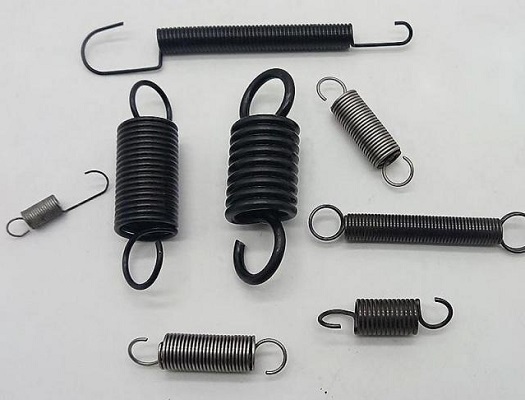Difference between compression, torsion and tension spring
A spring is a mechanical part that uses elasticity to work. Parts made of elastic materials deform under the action of external force, and return to their original shape after removing the external force. Also known as “spring”. Generally made of spring steel. The types of springs are complex and diverse. According to the shape, there are mainly spiral springs, scroll springs, leaf springs, and so on.

So what is the difference between compression springs, tension springs, and torsion springs? How can we distinguish them?
Compression springs are helical springs that bear pressure. Most of the materials used are circular in cross-section, and they are also rolled with rectangular and multi-strand steel coils. The springs are generally of equal pitch. The shapes of the compression springs are: Cylindrical, conical, convex and concave shapes, and a small amount of non-circular shapes, etc., there is a certain gap between the coils of the compression spring, and the spring shrinks and deforms when subjected to an external load to store deformation energy. Products are widely used in electronics, motors, computers, information, automobiles and motorcycles, bicycles, hardware tools, gifts, toys, and even the national defense industry. Because of their design and principles are easy to master, and the manufacturing control is the simplest.
The tension spring can directly hang heavy objects; it can also hang a sleeve upside down, and the upper end of the sleeve supports the heavy object. The tension spring is used to train the chest muscles. The current tension spring is generally dual-purpose and can also be used as a gripper; the arm strength device is used to exercise various muscles on the arm. There are many exercise methods, and the essence of the two devices is different. The compression spring can directly support heavy objects; it can also support a core rod, and the weight is suspended from the lower end of the core rod. Such as mattresses, sofas, and lighters use this characteristic of compression springs.
Torsion springs use the principle of leverage to twist or rotate elastic materials that are soft and tough, so that they have great mechanical energy. It is a spring that bears torsion and deformation, and its working part is also surrounded by each circle tightly or separately, such as a clip for clothes and a small hairpin for headwear.
Compression springs, torsion springs and extension springs are different in appearance and shape, and there is no substitute for installation. So according to what you install, you can know what spring to use.






